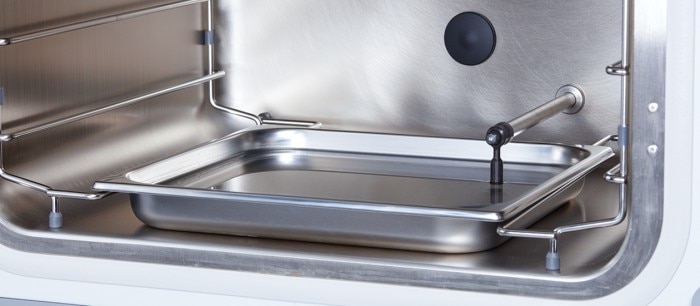MENU
TW | TWD
TW | TWD
You are about to leave this site.
Please be aware that your current cart is not saved yet and cannot be restored on the new site nor when you come back. If you want to save your cart please login in into your account.
No results found
Search Suggestions

Cell Culture FAQ: How often should I refill and replace the water in the humidity tray of the CO2 incubator?
Lab Academy
- Cell Biology
- Cell Culture
- Lab Routine
- CO2 Incubators
- FAQ
This article was published first in "Inside Cell Culture" , the monthly newsletter for cell culture professionals. Find more interesting articles about CO2 incubators on our page "FAQs and material on CO2 incubators" .
Answer by Dr. Jessica Wagener, Application Specialist Cell Handling at Eppendorf
In most CO2 incubators a simple tray filled with sterile distilled water is placed in the incubator to generate a highly humid atmosphere inside. This atmosphere prevents the cultured cells from drying out over time. Unfortunately, a humid atmosphere is also favored by unwanted microbial contaminants. However, adding biocides to the water of the humidity tray should be considered carefully. One aspect is the corrosive potential of some antimicrobial reagents, which can damage the stainless-steel of the humidity tray. Another risk is posed by volatile compounds in these reagents that might influence cell growth after evaporating from the humidity tray.
Independently of the use of antimicrobial reagents, the water in the humidity tray should be monitored closely to avoid undetected contamination growth or accumulation of harmful substances. Instead of only refilling the water it is advisable to completely replace the water regularly and clean the humidity tray (e.g. with 70% Ethanol) before adding fresh water. Our general recommendation is to replace the water in the CO2 incubator once a week.
Answer by Dr. Jessica Wagener, Application Specialist Cell Handling at Eppendorf
In most CO2 incubators a simple tray filled with sterile distilled water is placed in the incubator to generate a highly humid atmosphere inside. This atmosphere prevents the cultured cells from drying out over time. Unfortunately, a humid atmosphere is also favored by unwanted microbial contaminants. However, adding biocides to the water of the humidity tray should be considered carefully. One aspect is the corrosive potential of some antimicrobial reagents, which can damage the stainless-steel of the humidity tray. Another risk is posed by volatile compounds in these reagents that might influence cell growth after evaporating from the humidity tray.
Independently of the use of antimicrobial reagents, the water in the humidity tray should be monitored closely to avoid undetected contamination growth or accumulation of harmful substances. Instead of only refilling the water it is advisable to completely replace the water regularly and clean the humidity tray (e.g. with 70% Ethanol) before adding fresh water. Our general recommendation is to replace the water in the CO2 incubator once a week.

